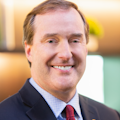What is the metaverse—and how is dentistry affected by it?
Dentistry is entering the metaverse, and it will be a technological disruptor likely bigger than using scanners for clear aligners!
The last 30 years have seen revolutionary changes in technology, and it is safe to say that it is not slowing down. The ’90s saw the beginning of the Internet (Web 1.0), the 2000s brought us smartphones and social media (Web 2.0), and now it’s time for Web 3.0. Wikipedia describes it as “an idea for a new iteration of the World Wide Web, which incorporates concepts such as decentralization, blockchain technologies, and token-based economics.”1
Included in Web 3.0 is an entirely new world called the metaverse. It is a world that will be expanding the place in which we work and play. Like the explorers and immigrants who came to the New World in search of freedom, people will explore this new place to enhance collaboration, learn, and play in ways never imagined, even in the dental profession.
Related reading
The industrial revolution of money: Investing in bitcoin and cryptocurrencies
3 ways technology has changed the way we do business
What is the metaverse?
The metaverse was first mentioned in a book by Neal Stephenson, Snow Crash, in 1992. Stephenson called it a “computer generated universe.”2 This may be a simplistic definition, but it's a starting point to explain a world that many of us will find challenging to embrace initially. The building blocks of Web 3.0 and the metaverse are:
- Decentralization
- Blockchain technology, which is an immutable digital ledger
- Token-based economics using cryptocurrencies and NFTs (nonfungible tokens)
Decentralization is the core principle of what this technology is all about. It simply means the spread of power away from the center, similar to the Founding Fathers creating a decentralized government giving the power to the people and not the central authority of the British Empire.
Back in the 1990s, the dental profession maintained its decentralization or cottage industry model, while the medical profession morphed into a more centralized model by going down the insurance path. Although both professions have changed over the past 25 years, in my opinion, most believe that dentistry benefited greatly from controlling their own destiny with small business ownership in the decentralized platform.
In the world of Web 3, the idea is to give the power of the web to the end users and to protect their data from the centralized platform holders (Google, Amazon, Facebook, etc.). Data is an extremely valuable asset, and Robert Edward Grant (CEO of Crown Sterling) believes it is the most valuable asset in the world.3 Data sovereignty for individuals and our patients needs to be protected and not censored.
The second building block is the blockchain. It is the framework for which all of this technology works. It can be defined as a shared ledger, allowing thousands of connected computers or servers to maintain a single, secured, and immutable ledger.4 In a nutshell, it is a decentralized network of computers where the information or database is stored on a ledger that cannot be changed, which makes it secure and transparent. In addition, the information can be shared peer-to-peer, removing the middleman from transactions.
The economics of all of this utilizes tokens as a form of digital currency or cryptocurrency. The first and largest cryptocurrency is bitcoin and was created by Satoshi Nakamoto in 2008.5 The purpose is to have “a purely peer-to-peer version of electronic cash that would allow online payments to be sent directly from one party to another without going through a financial institution.”5
A very interesting part of bitcoin is that there will be only 21 million ever mined or created (as of Sept. 26, 2022: 19,161,112 in circulation),6 which means that this form of money cannot be inflated or created out of thin air like our current fiat system. In the high-inflationary environment that our economy is currently in, this form of digital currency, or maybe another one, has a lot of appeal for those looking to prevent their money from eroding away.
There are thousands of cryptocurrencies with numerous different utilities. The second largest one is Ethereum. It is “a technology for building apps and organizations, holding assets, transacting and communicating without being controlled by a central authority.”7 It is different from bitcoin in that it is programmable, so many different applications can be built on its network. Ethereum.org calls it “a marketplace of financial services, games, social networks and other apps that respect your privacy and cannot censor you.”7
Whether it is bitcoin, Ethereum, or another cryptocurrency, there will be a time when we will be accepting cryptocurrency as a form of payment in our dental offices. According to Dentaltown, we pay 1-4% on credit card processing fees.8 Imagine lowering these fees to pennies on the dollar by using peer-to-peer cryptocurrencies and taking out the middleman in all these transactions. This will save thousands of dollars per year on fees, and in a world where profitability is getting squeezed, every little bit can help a lot in a financial plan. For example, $5,000 saved per year, invested at 6% for 25 years, would be $290,782! These capabilities are being made in the metaverse for dentists called the dentaverse (dentaverse.io).
Entering the metaverse
The metaverse, sometimes called cyberspace, can be accessed in a number of different ways. One can be as simple as downloading an app on your desktop. Or, you can purchase virtual reality or augmented reality goggles.9 Once in the metaverse, each participant will create their own avatar (a movable image that represents a person in a virtual reality environment) and interact with others as well as venture into conference rooms for continuing education in a 3D atmosphere. This environment will be an entirely new field of pedagogy.
In 2021, lung cancer surgery training was given in a smart operating room in the metaverse from a hospital in Seoul, Korea.10 Dr. Sang-Hoon Ahn, a professor at this hospital, said “Video education using the metaverse is more effective than any other educational method available so far.”10 Dental education and hands-on courses were certainly impacted by the COVID-19 pandemic, so imagine having the ability to learn and train remotely in the metaverse. Or, wearing haptic gloves to feel virtual objects to give a nerve block or practice suturing.11 This is just scratching the surface of what can happen in the metaverse!
Blasting into the metaverse and utilizing blockchain technology are inevitable. These technologies can enhance many of the things we do, including in the field of dentistry. The ability to collaborate with colleagues all over the world as well as train dentists in countries that do not have the level of training as the United States provides a benefit for humanity. Humanitarian efforts are even being built into the dentaverse.12 This takes access to care to another level! The metaverse does not mean that face-to-face meetings and dental schools will disappear, but this virtual world provides a forum for enhanced engagement both nationally and internationally.
Editor's note: This article appeared in the December 2022 print edition of Dental Economics magazine. Dentists in North America are eligible for a complimentary print subscription. Sign up here.
References
- Web3. Wikipedia. https://en.wikipedia.org/wiki/Web3
- Stephenson N. Snow Crash. Del Rey; 1992.
- How blockchain will empower personal data sovereignty & save democracy. Robert Edward Grant. September 13, 2021. https://robertedwardgrant.com/how-blockchain-will-empower-personal-data-sovereignty-save-democracy/
- Srivastava N. What is blockchain technology, and how does it work? Blockchain-Council. September 5, 2022. https://www.blockchain-council.org/blockchain/what-is-blockchain-technology-and-how-does-it-work/
- Nakamoto S. Bitcoin: a peer-to-peer electronic cash system. Satoshi Nakamoto Institute. October 31, 2008. https://nakamotoinstitute.org/bitcoin/
- Today’s cryptocurrency prices by market cap. CoinMarketCap.com. Accessed September 26, 2022. https://coinmarketcap.com/
- What is Ethereum? The foundation for our digital future. https://ethereum.org/en/what-is-ethereum/
- 3 tips for dental practices to get lower credit card processing fees. Dentaltown. May 15, 2017. https://www.dentaltown.com/blog/post/7114/3-tips-for-dental-practices-to-get-lower-credit-card-processing-fees
- Ravenscraft E. What is the metaverse, exactly? Wired. April 25, 2022. https://www.wired.com/story/what-is-the-metaverse/
- Koo H. Training in lung cancer surgery through the metaverse, including extended reality, in the smart operating room of Seoul National University Bundang Hospital, Korea. J Educ Eval Health Prof. 2021;18:33. doi:10.3352/jeehp.2021.18.33
- Locurcio LL. Dental education in the metaverse. Br Dent J. 2022;232(4):191. doi:10.1038/s41415-022-3990-7
- Dentaverse. https://www.dentaverse.io/
About the Author

Mart McClellan, DDS, MS
Mart McClellan, DDS, MS, is president of Macro Wealth Management and author of the Amazon No. 1 bestseller Your Retirement Smile. His firm specializes in cryptocurrency, and he can be contacted at [email protected].
